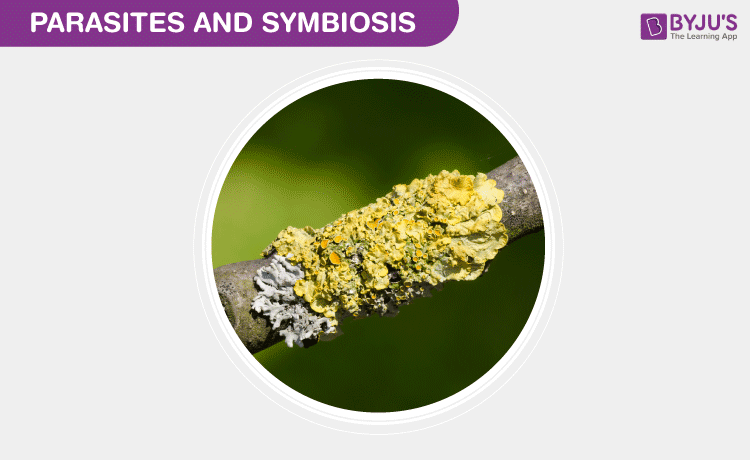Parasitic Symbiosis Definition
“Parasitic symbiosis is a close and long-term symbiotic interaction between two organisms, where one lives in the body of the host causing it some harm.”

Let’s have a glimpse of parasites, symbiosis, and parasitic symbiosis along with its types and examples.
Parasites
The word “parasite” is derived from the Greek word meaning, “the one that eats at the table of others”, and is estimated to be from around 5900 BC.
Parasites are an incredibly varied group of organisms that live within host cells. They are smaller than their host organism and reproduce faster by causing more damage to the host. They receive all sorts of benefits like food and shelter from the host. Their size ranges from tiny, single-celled organisms to worms over 20- 30 m in length.
For example- Tapeworms, that are flat, segmented worms, live in the intestines of animals by absorbing the host’s nutrients.
Parasitic Symbiosis
Symbiosis refers to a long period interaction between two different species. In some cases, both species benefit from the interaction and this is known as mutualism. The larger organism is considered a host because, in a symbiotic relationship, it is the larger organism on which the smaller organism depends. The smaller organism is considered to be a symbiont, that lives inside the host.
Parasitism is the type of symbiotic relationship or long-term relationship between any two species either plants or animals. Here the parasite gains benefits from the host which in turn harms the host without killing it.
Leeches, fleas, ticks, and lice are a few examples of parasites that don’t normally cause disease directly. They suck blood from the host without causing any harm to their host.
Also Read: Parasitism
Types of Parasitism
Parasites can be classified based on their size, characteristics, and relationship with the host:
- Endoparasites
- Ectoparasites
- Mesoparasites
- Endoparasites: A parasites living inside the host’s body. For example-Plasmodium falciparum, a parasite which causes malaria in humans.
- Ectoparasites: A parasites living outside the host’s body. For example- Bedbug, a parasite which causes skin irritation.
- Mesoparasites: These enter the opening of the body of a host and embed themselves only partially.
These parasites may also transmit disease-causing pathogens to other species of animals.
The life of a typical parasite commonly includes certain developmental stages. During this time, the parasite goes through two or more changes in the body structure as it lives and moves through one or more hosts.
The number of parasites exceeds the number of free-living organisms, means the parasitic lifestyle has been a successful one over the years.
Parasitic Symbiosis Examples
Following are the examples of parasitic symbiosis:
Fasciola hepatica
This is also known as Liver fluke. It attaches itself onto the liver and makes way to the tissue and bile.
Plasmodium
There are different species of Plasmodium that are picked up by the mosquitoes and transmitted to different people causing Malaria.
Hirudinea
Leeches usually depend on different animals to complete their life cycle. The animals that leeches depend upon include, freshwater fish, slugs, snails, mice bear, etc.
Taenia solium
It can live in the human gastrointestinal tract for years. It spreads through under-cooked pork. These are more than three meters long.
Also Read: Lichens
To know more about parasites, symbiosis, parasitic symbiosis definition and its examples, keep visiting BYJU’S website or download BYJU’S app for further reference.

Comments